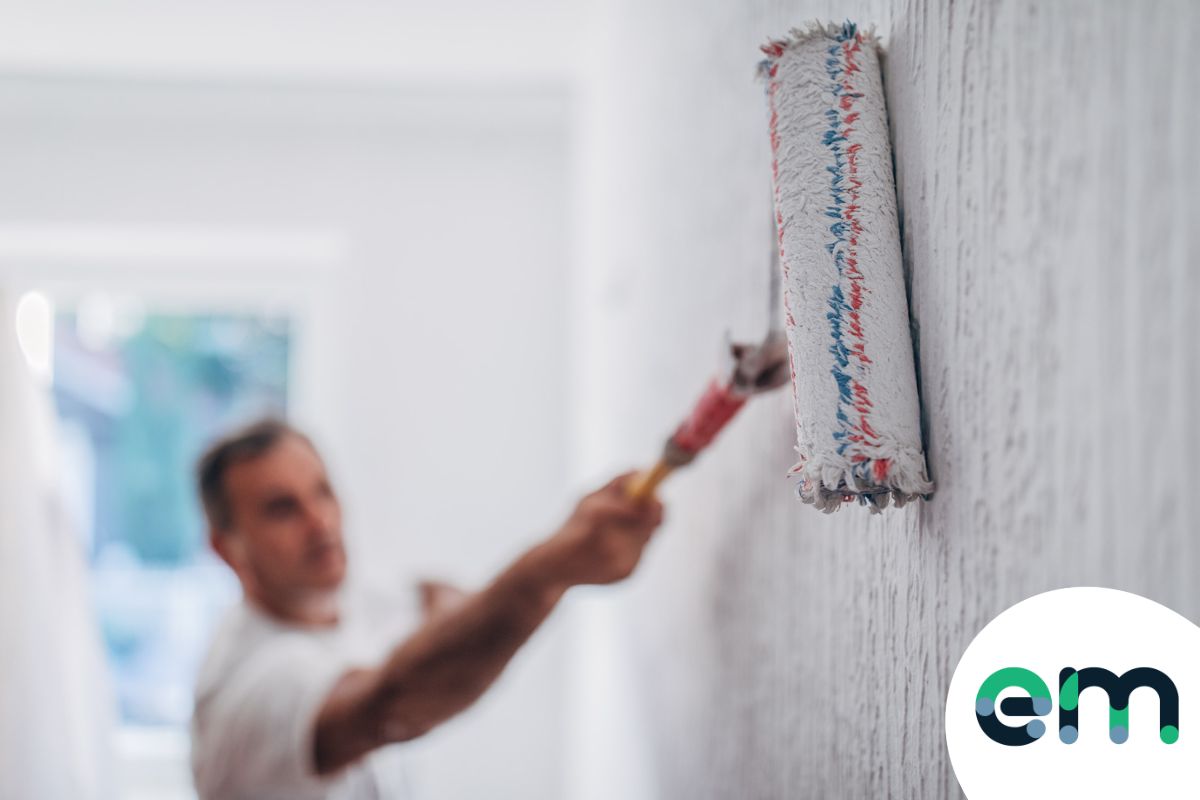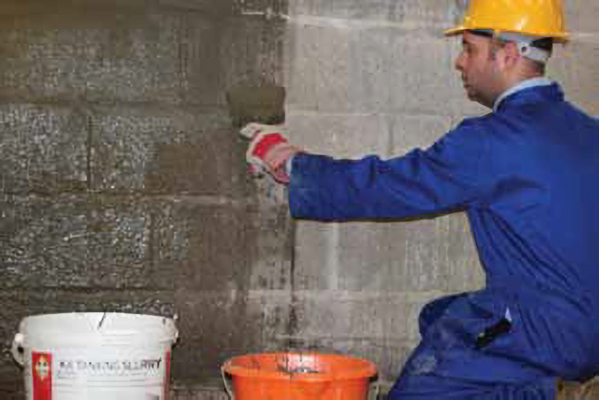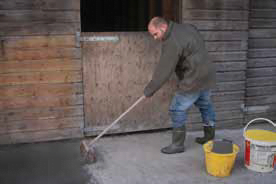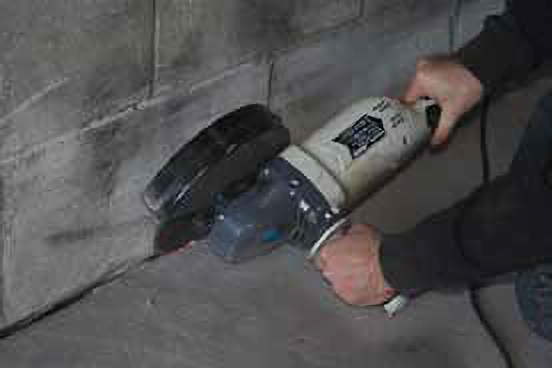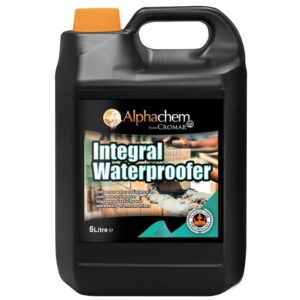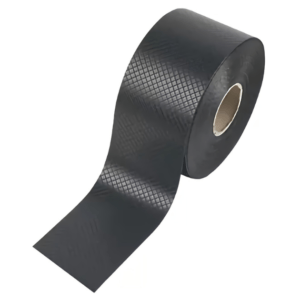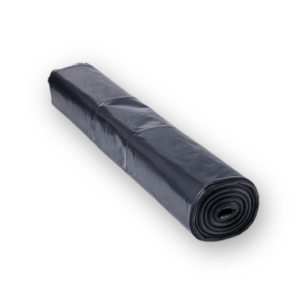No products in the basket.
Blog
Waterproofing 101: The Advantages of Using Tanking Slurry over Damp Proof Membranes
Efficient and Effective Waterproofing: The Benefits of Using Tanking Slurry in Construction
So, you need to waterproof your property, and you’re probably thinking of using a damp-proof membrane (DPM) – but have you heard of tanking slurry?
Tanking slurry is just as (or sometimes even more) effective than using a damp proof membrane and it’s even easier to use because it comes as a powder that only needs to be mixed with water and a bonding agent to create a paste which is then simply brushed onto the wall or surface to create a waterproof barrier.
It works by forming insoluble crystals which seep into and fill any cracks or fissures of the wall, concrete or bricks. Once applied, it’ll create a thick watertight layer that fully prevents leakage or ingress of water.
Some of the common places tanking slurry will be used is in basements, swimming pools, foundations, bathrooms, retaining walls and exterior walls. One of the best things about the KA Tanking Slurry is that it can be applied in one or two coats, with a coverage of 7-8m² per 25kg bucket, this means that even large projects can be finished quickly and efficiently by one person, bringing down costs and speeding up your project.
Although tanking slurry can be applied directly to concrete, blockwork, masonry or cement renders, it is recommended by the manufacturer to use a bonding agent such as the SBR bonding agent. The bonding agent should be applied before the application of the tanking slurry to create a durable adhesive bond that will not re-emulsify. The manufacturer does not guarantee the installation of tanking slurry when the bonding agent isn’t used with it, although it is possible to use the slurry without the bonding agent, we would not recommend it.
It should be applied to the desired surface with the use of a brush or roller to make sure it is spread evenly, this ensures that the bond between the substrate and the slurry is strong and will not allow any moisture to seep through. It’s also worth noting that the manufacturer does not recommend installing tanking slurry in temperatures below -5°C.
How to use tanking slurry.
Firstly, you’ll need a clean surface, so begin by clearing the surface of debris, make sure that no paint, oil or any other chemical is present. The tanking slurry must be applied to a porous, wet substrate that must be clean. Any contaminants will hinder the adhesion of the slurry.
Next, Saturate the surface that the tanking slurry is to be applied to, with water. This will allow the formation of crystalline chemicals to bed deep into any cracks or crevices.
Then mix the tanking slurry powder into a bucket of water at a ratio 2.5:3 parts KA Tanking Slurry – for example, 5 litres of water requires 12.5kg – 15kg of tanking slurry powder. Mix thoroughly into a paste. It is important not to mix more of the slurry that can be applied within 30 minutes at 20°C.
There are a few differences when used on walls or floors, so we’ve wrote two separate guides below:
Using tanking slurry on walls:
As mentioned earlier, we would recommend using a bonding agent before applying the tanking slurry such as the KA Bond SBR. This will help the slurry to bond to the wall creating an adhesive bond that doesn’t re-emulsify – which means that the tanking slurry will adhere properly to the wall. If the emulsion breaks down the tanking slurry will lose its waterproofing properties and become ineffective.
So, before you apply the tanking slurry to the wall, first dilute the KA Bond SBR in a 1:1 ratio with water. Bear in mind that it’s important to not let the SBR dry completely, it should remain tacky before applying the tanking slurry.
Mechanically mix the tanking slurry and add 1 litre of KA Bond SBR for every 25kg bucket. As an example use 1 litre of KA Bond SBR with 5 litres of water.
After roughly 4-6 hours it should become touch dry, and you can then add the final second coat.The tanking slurry should be brushed, trowelled or sprayed onto the walls with an ideal thickness of 3-5mm. One coat should be applied horizontally and the other vertically.
Using tanking slurry on floors:
When applying the slurry to a floor, make a saw cut along the edge of the floor approximately 15mm deep at a 45° angle. This will allow the mixture to enter the corners making sure that they are sufficiently tanked.
Firstly, dilute KA Bond SBR in a 1:1 ratio with water and add to the floor area. Leave it for approximately 10 – 15 minutes for it to “tack over”, make sure that it does not dry completely.
Next, mechanically mix your tanking slurry with KA Bond SBR and pour one coat to the floor area. A guide is to add 1 litre of KA Bond into every 25kg bucket. It should be poured or trowelled onto the floor to a thickness of 3-5mm.
When repairing large cracks, use a 3:1 ratio of Sand:Cement mortar gauged with SBR bonding agent, this will essentially plug the cracks. This must be left for at least 24 hours to cure before applying a coat of tanking slurry. For larger areas of new brick work, poured concrete or cement renders, you should leave it for 3 days before the application of tanking slurry. In summary, Ka Tanking slurry along with the SBR bonding agent is the perfect solution for preventing leakage into concrete and brick structures, it is easy to apply and provides a strong, permanent watertight layer.
Whether you are working on a large commercial project or a smaller residential building / renovation, old or new, KA tanking slurry is an excellent choice to make sure your structure stays dry and protected even in the heaviest of rain.
